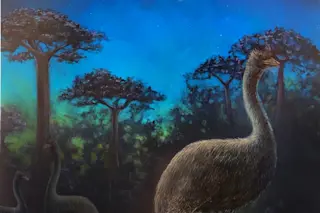They were enormous, the biggest of the big, and, say authors of a new study reconstructing bird brains, the elephant birds of Madagascar were also nocturnal. The new research reveals surprising details about the animals, their habitats and their closest evolutionary kin. Before they went extinct in the last millennium, Madagascar’s elephant birds were the biggest birds ever to walk the earth. Earlier this year, researchers determined that the largest of the flightless birds weighed 650kg (more than 1,400 pounds). Estimates for height are less exact due to limited information about their likely posture, but some scientists believe the birds may have stood 12 feet tall.
Based on the activity patterns of other large, flightless bird species still alive, such as emus and ostriches, elephant birds were long thought to be active during the day. That’s despite some early research into unusual features of their brains based on skull interior ...














